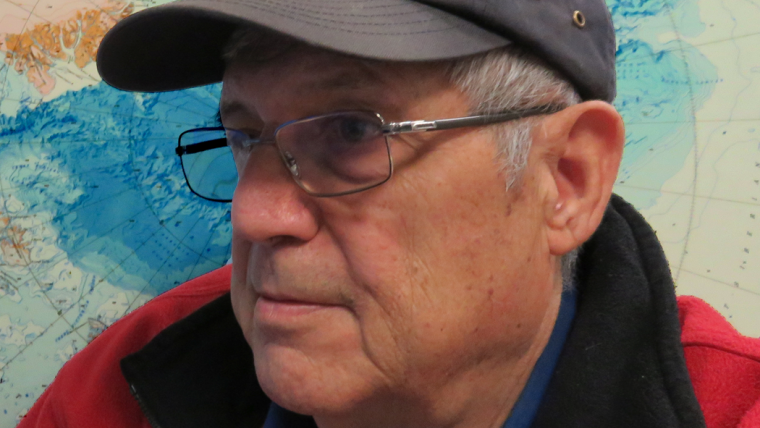Autonomous Arctic Drifting Seismic Buoys
Less than 30,000km of seismic profile exist for the Arctic Ocean. Components of a new autonomous drifting seismic buoy have now been successfully tested using the hovercraftR/H Sabvabaa. Three buoys will be deployed in Spring 2009 and could potentially produce over 5,000km of profile per year.<P>
Seismic data are exceedingly difficult to acquire in the ice-covered Arctic Ocean. This is especially true in the areas of thicker multi-year ice over the Alpha Ridge north of Greenland and Ellesmere Island where the three oldest sediment cores (Upper Cretaceous or 60–70 million years ago) have been raised. With the aim of studying the origin of the Alpha Ridge, as well as the possible site of an asteroid impact a few million years ago, the hovercraft R/H Sabvabaa (see the Insider’s View, May 2008 issue) has now completed its first summer field season operating out of Longyearbyen, Svalbard, over the Yermak Plateau. The hovercraft is equipped with a deep-water echosounder, chirp sub-bottom profiler, and a 20-cubic-inch airgun with six-channel streamer. As the hovercraft is an ideal platform for deploying drifting acoustic sensors, the project has also focused on the development of both autonomous echosounding and seismic buoys (cover article, June 2006 issue).
The driving force behind the hovercraft project, Professor Yngve Kristoffersen of the University of Bergen (UiB), is now assembling three autonomous drifting seismic buoys for deployment in 2009. The buoys, placed on multi-year ice, are designed to use a wind generator and solar energy panels to power a sub-bottom profiler. The sound source is a 4,600-joule capacitor bank from Applied Acoustic Engineering Ltd (UK), producing an underwater spark. As the ice and buoy drift at an average speed of 5km/day, the system fires the sparker every 50m of movement. The reflected seismic energy is received by a single ITC-8073 hydrophone. The seismic arrival is digitised and a 1-second trace, beginning just before the bottom arrival, is sent back to the UiB as a 2-kilobyte (400 samples plus time and GPS position) Iridium short burst data (SBD) message.
Christian Michelsen Research (CMR) in Bergen designed the buoy electronics and data handling and transmission software. To facilitate recovery in the event of a total system failure, there is also an Argos satellite transponder. The first results, a 1-kilometre profile showing 500 milliseconds of coherent reflectors in 400 metres of water over the Yermak Plateau, are shown in Figure 1, along with an example of the hovercraft in its operational drift mode. A contract has also been signed with CMR for development of a prototype Seafloor Sounding in Polar And Remote Regions (SSPARR) autonomous echosounding buoy. This is the continuation of a stalled National Science Foundation programme. The buoy features a small 12kHz transducer with 5,000m capability. It will make a depth measurement with every 20m change in position. The seismic buoy SBD transmission format will be used initially to gather bottom return signatures to allow future implementation of a tailored bottom detection algorithm.

Value staying current with hydrography?
Stay on the map with our expertly curated newsletters.
We provide educational insights, industry updates, and inspiring stories from the world of hydrography to help you learn, grow, and navigate your field with confidence. Don't miss out - subscribe today and ensure you're always informed, educated, and inspired by the latest in hydrographic technology and research.
Choose your newsletter(s)
























